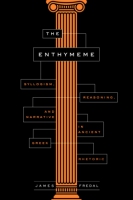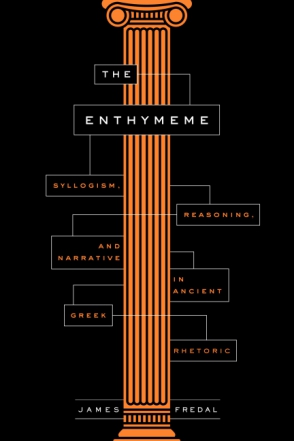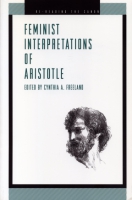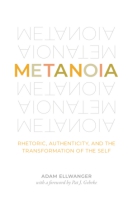The Enthymeme
Syllogism, Reasoning, and Narrative in Ancient Greek Rhetoric
James Fredal
“James Fredal challenges traditional Aristotelian interpretations of the enthymeme as an abstract theoretical concept by examining ‘enthymizing’ as a situational activity occurring within rhetorical narratives of Greek oratory. A provocative and insightful study that compels readers to reconsider long-accepted notions of Hellenic rhetorical theory.”
- Description
- Reviews
- Bio
- Table of Contents
- Sample Chapters
- Subjects
From close analysis of the Rhetoric, Topics, and Analytics, Fredal finds that Aristotle’s enthymeme is, in fact, not syllogistic and is different from the enthymeme as it was used by Attic orators such as Lysias and Isaeus. Fredal argues that the enthymeme, as it was originally understood and used, is a technique of storytelling, primarily forensic storytelling, aimed at eliciting from the audience an inference about a narrative. According to Fredal, narrative rather than formal logic is the seedbed of the enthymeme and of rhetoric more broadly.
The Enthymeme reassesses a fundamental doctrine of rhetorical instruction, clarifies the viewpoints of the tradition, and presents a new form of rhetoric for further study and use. This groundbreaking book will be welcomed by scholars and students of classical rhetoric, the history of rhetoric, and rhetorical theory as well as communications studies, classical studies, and classical philosophy.
“James Fredal challenges traditional Aristotelian interpretations of the enthymeme as an abstract theoretical concept by examining ‘enthymizing’ as a situational activity occurring within rhetorical narratives of Greek oratory. A provocative and insightful study that compels readers to reconsider long-accepted notions of Hellenic rhetorical theory.”
“Fredal’s interdisciplinary approach is impressive, demonstrating currency in fields such as classical rhetoric, formal logic, and legal theory; his treatment of Aristotle—his argument that terms such as syllogism have a general sense rather than the technical sense they acquired later—resonates with contemporary philology.”
“The volume offers a valuable account of a key element of Greek rhetorical practice and serves as a worthy reminder of the importance of the insights of the Greeks for our own theory of narrative and vice versa. It invites us to revisit difficult and unresolved issues of the relationships that hold among narrative, rhetorical speech and logic, and how they were regarded in antiquity.”
James Fredal is Associate Professor of English at The Ohio State University. He is the author of Rhetorical Action in Ancient Athens: Persuasive Artistry from Solon to Demosthenes.
Introduction
Part One 3.0
1. Enthymeme 3.0: The Truncated Syllogism
2. 3.0 and Its Problems
Part Two 2.0
3. Aristotle, Sullogismos, and 2.0
4. 2.0 and Its Problems
Part Three 1.0
5. Enthymizing in the Orators
6. Oratorical Enthymizing in Context
7. Enthymizing and Adversarial Narratives
Part Four Lysias and the Enthymeme
8. Enthymizing in Lysias 1, On the Death of Eratosthenes
9. A Many-Layered Tale
Conclusion
Notes
References
Index
Download a PDF sample chapter here: Introduction
Also of Interest
Mailing List
Subscribe to our mailing list and be notified about new titles, journals and catalogs.






